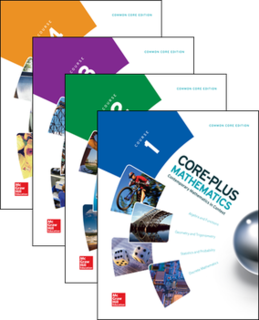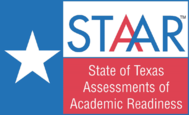
Bright Futures is a scholarship program in the state of Florida. It is funded by the Florida Lottery and was first started in 1997.

The Texas Assessment of Knowledge and Skills (TAKS) was the fourth Texas state standardized test previously used in grade 3-8 and grade 9-11 to assess students' attainment of reading, writing, math, science, and social studies skills required under Texas education standards. It is developed and scored by Pearson Educational Measurement with close supervision by the Texas Education Agency. Though created before the No Child Left Behind Act was passed, it complied with the law. It replaced the previous test, called the Texas Assessment of Academic Skills (TAAS), in 2002.
In New York State, Regents Examinations are statewide standardized examinations in core high school subjects. Students are required to pass these exams to earn a Regents Diploma. To graduate, students are required to have earned appropriate credits in a number of specific subjects by passing year-long or half-year courses, after which they must pass at least five Regents examinations in some of the subject areas. For higher-achieving students, a Regents with Advanced designation and an Honors designation are also offered. Students with disabilities or enrolled in an English as a Second Language program are able to earn a local diploma.

Core-Plus Mathematics is a high school mathematics program consisting of a four-year series of print and digital student textbooks and supporting materials for teachers, developed by the Core-Plus Mathematics Project (CPMP) at Western Michigan University, with funding from the National Science Foundation. Development of the program started in 1992. The first edition, entitled Contemporary Mathematics in Context: A Unified Approach, was completed in 1995. The third edition, entitled Core-Plus Mathematics: Contemporary Mathematics in Context, was published by McGraw-Hill Education in 2015.
Education in Kentucky includes elementary school, middle school, high school, and post-secondary institutions. Most Kentucky schools and colleges are accredited through the Southern Association of Colleges and Schools (SACS).

Monarch High School (MHS) is a public high school located in Coconut Creek, Florida. Monarch is a part of the Broward County Public Schools system, and serves neighborhoods in: Coconut Creek, Deerfield Beach, Margate, and Pompano Beach.
Pert or PERT may refer to:
The College Academy @ BC Central is a joint venture between The School Board of Broward County and Broward College. The College Academy @ BC Central Campus offers high school juniors and seniors enrolled as full-time students in the program the opportunity to receive a high school diploma from The School Board of Broward County, Florida and an Associate of Arts (AA) degree from Broward College. The rigorous nature of the program helps students qualify for the State of Florida Bright Futures Scholarship Program. The College Academy is designed for students who have the maturity required for college campus life and the academic ability to handle the rigor of college work. Both high school and dual enrollment courses are taught on the BC Central campus. An extension to North Campus has been opened in the fall of 2015. Students take between 12 and 18 college credits Fall and Winter Terms and approximately 6 college credits Session I of the Summer Term. Students must maintain a 2.5 unweighted grade point average in order to remain at The College Academy.
Remedial education is assigned to assist students in order to achieve expected competencies in core academic skills such as literacy and numeracy.
The Common Core State Standards Initiative, also known as simply Common Core, is an educational initiative from 2010 that details what K–12 students throughout the United States should know in English language arts and mathematics at the conclusion of each school grade. The initiative is sponsored by the National Governors Association and Council of Chief State School Officers.
The Partnership for Assessment of Readiness for College and Careers (PARCC) is a consortium featuring two states, the District of Columbia, the Department of Defense Educational Activity, and the Bureau of Indian Education, that work to create and deploy a standard set of K–12 assessments in Mathematics and English, based on the Common Core State Standards.
Placement testing is a practice that many colleges and universities use to assess college readiness and determine which classes a student should initially take. Since most two-year colleges have open, non-competitive admissions policies, many students are admitted without college-level academic qualifications. Placement tests assess abilities in English, mathematics and reading; they may also be used in other disciplines such as foreign languages, computer and internet technologies, health and natural sciences. The goal is to offer low-scoring students remedial coursework to prepare them for regular coursework. Less-prepared students are placed into various remedial situations, from adult basic education through various levels of developmental college courses.

The State of Texas Assessments of Academic Readiness, commonly referred to as its acronym STAAR, is a series of standardized tests used in Texas public primary and secondary schools to assess a student's achievements and knowledge learned in the grade level. It tests curriculum taught from the Texas Essential Knowledge and Skills, which in turn is taught by public schools. The test used to be developed by Pearson Education every school year, although the most recent contract gave Educational Testing Service a role in creating some of the tests, under the close supervision of the Texas Education Agency.
Common Educational Proficiency Assessment (CEPA) is a set of locally-developed standardized tests used for admissions and placement by three federal institutions of higher education in the United Arab Emirates. The tests are produced by the UAE Ministry of Higher Education and Scientific research as part of the National Admissions and Placement Office (NAPO) and administered in the three federal institutions. Around 17,000 grade 12 Emirati students take the tests each year. There are two CEPA exams. CEPA-English tests basic English proficiency, and CEPA-Math measures basic math skills. Both exams are administered in two formats: paper-based and computer-based.
In U.S. education, deeper learning is a set of student educational outcomes including acquisition of robust core academic content, higher-order thinking skills, and learning dispositions. Deeper learning is based on the premise that the nature of work, civic, and everyday life is changing and therefore increasingly requires that formal education provides young people with mastery of skills like analytic reasoning, complex problem solving, and teamwork.
The CaMLA English Placement Test (EPT) is used principally by English language teaching schools to assess students’ language ability levels and place them in the right English language course. It is also used by organizations as a screening test to evaluate the English language proficiency of prospective employees.
ACT, Inc. is an American 501(c)(3) nonprofit organization, primarily known for the ACT, a standardized test designed to assess high school students' academic achievement and college readiness. For the U.S. high school graduating class of 2019, 52 percent of graduates had taken the ACT test; the more than 1.78 million students included virtually all high school graduates in 17 states.
Rachel Levy is an American mathematician and blogger. She currently serves as the inaugural Executive Director of the North Carolina State University Data Science Academy. She was a 2020-21 AAAS Science and Technology Policy Fellow, serving in the United States Senate and sponsored by the American Mathematical Society. From 2018-2020 she served as deputy executive director of the Mathematical Association of America(2018-2020). As a faculty member at Harvey Mudd College from 2007-2019 her research was in applied mathematics, including the mathematical modeling of thin films, and the applications of fluid mechanics to biology. This work was funded by The National Science Foundation, Research Corporation, Howard Hughes Medical Institute, and US Office of Naval Research.
David J. Deming is an American economist and Professor of Public Policy at the Harvard Kennedy School, Professor of Education and Economics at the Harvard Graduate School of Education, Director of the Malcolm Wiener Center for Social Policy, His research focuses on the economics of education in general and the impact of education policies on long-run non-test score outcomes. In 2018, David Deming received the David N. Kershaw Award and Prize from the Association for Public Policy Analysis and Management for his work in the areas of secondary education, vocational training and skills.



